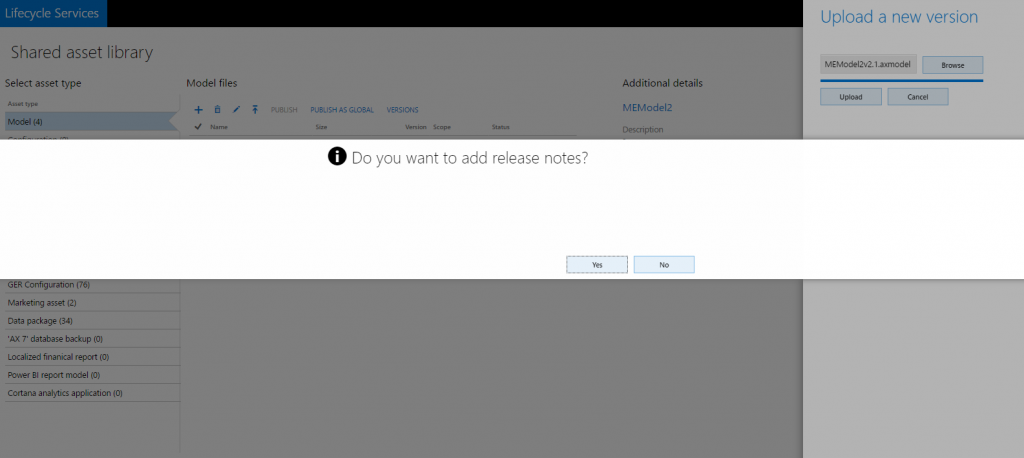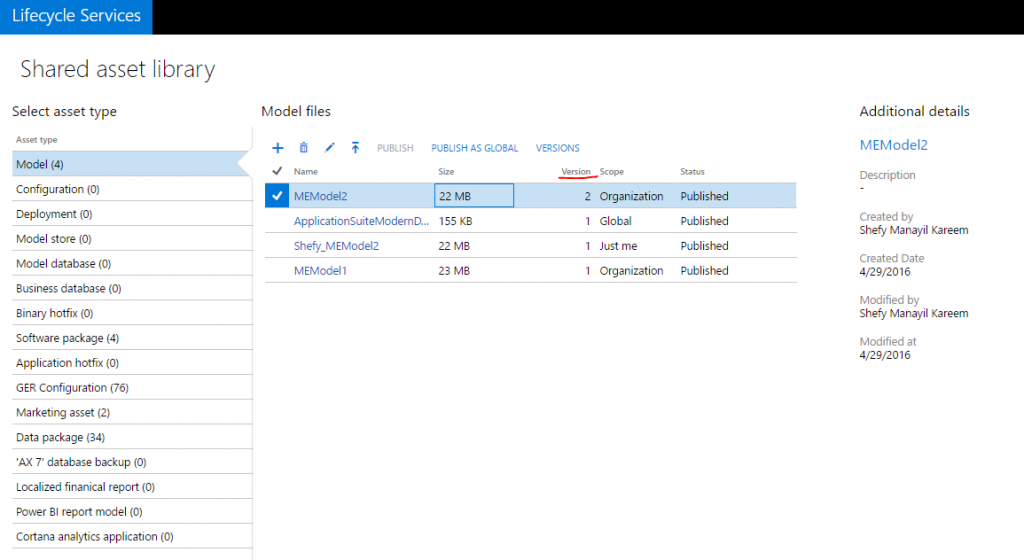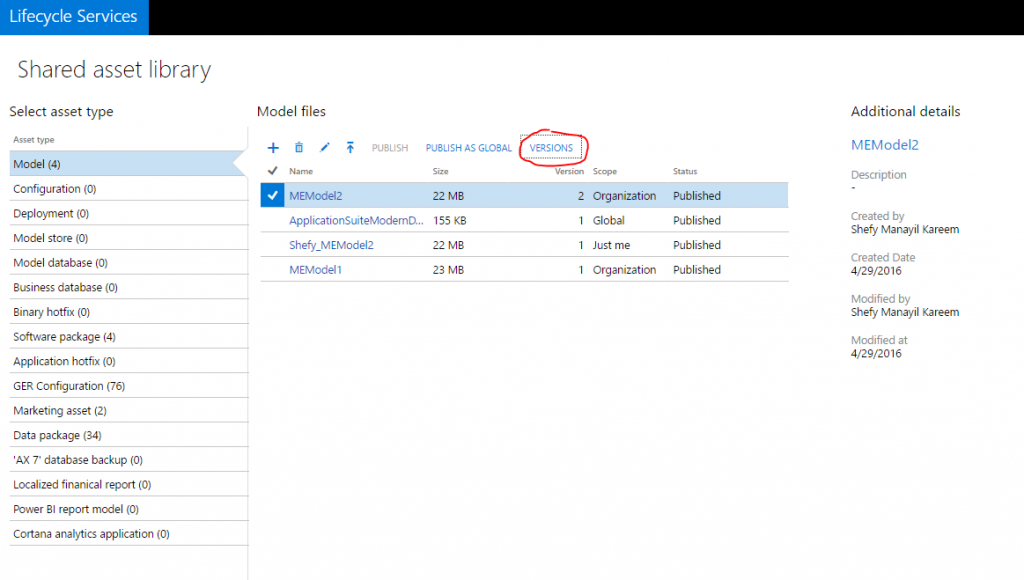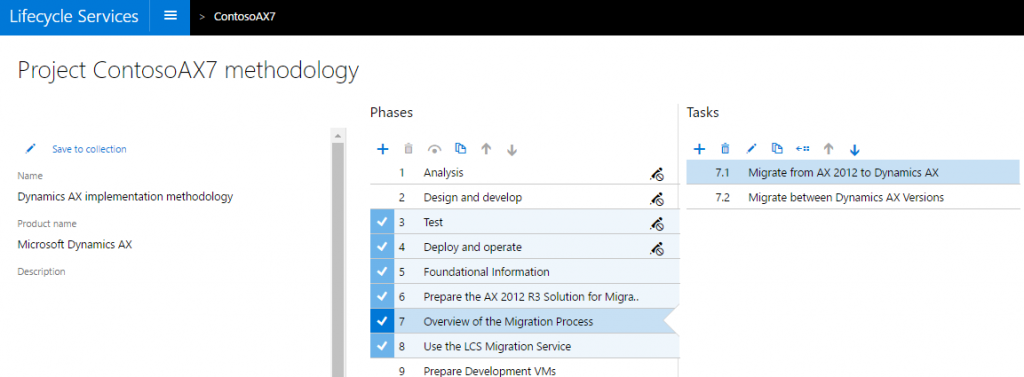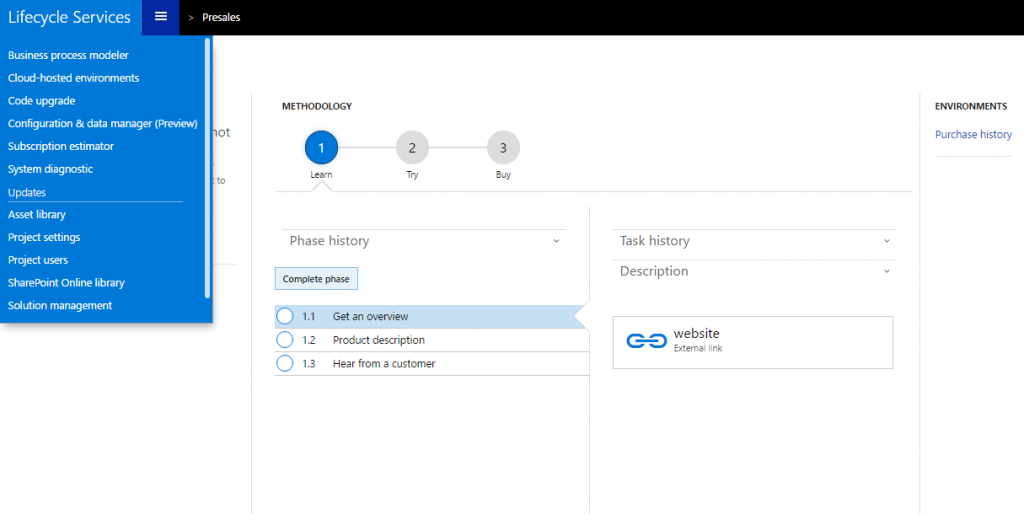April 2016 release notes
The Microsoft Dynamics Lifecycle Services team is happy to announce the immediate availability of the April release of Lifecycle Services.
NEW FEATURES
Asset library
You can now ship a new version of any file in the asset library and provide release notes when you publish an asset. This is useful when you have assets that are published with your organization users. Organization users can now get additional versions of the same file and check what has changed with each version from the release notes, before they download a specific version.
Select the published file for which are publishing a newer version and then click Upload, as shown below.

Click Browse to navigate to the location where you have stored the new version of the file, and then click Upload.
Click Yes to add release notes.
Click Browse to navigate to your release notes file, and then click Upload.
Note that the Version column shows the latest version number of the asset that is in the asset library.
Users can download a specific version by clicking on that version and download the related release notes.
This is also useful when you have shared or imported these assets into a customer’s project. When you ship incremental versions, the customer will be able to download the files and release notes from their project.
LCS Solution improvements
When you create a process data package, you can use the Select all button to add all assets in your asset library to the process data package.
Solution edit
You can edit your solution and provide the updated version of your solution to your customers. This task must be completed by a solution approver.
On the Published solutions page, click Edit.
Editing the solution is similar to how you created a solution in a project.
Select a project from the list of available projects. We recommend that when you edit a project solution, that you create a new solution creation project. Note that a solution can be opened for edit only once until it is published. If you would to like to collaborate on the editing process, the editing user needs to invite you to the Project.
When you click Edit, the solution will open in edit mode in the project that you selected.
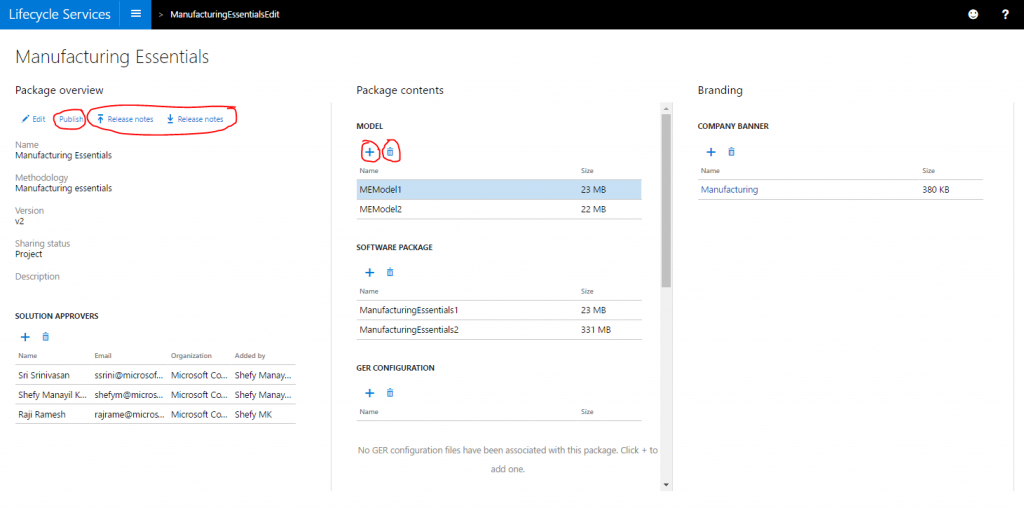
Similar to how you created the solution, you can add and delete assets from the solution and you can also add release notes. After you have made the required changes, you can publish the solution.
After you publish a new version of solution, all of your customers can access the newest version and the associated release notes from the asset library.
A customer project will have a specific version as you can see below. Now the customer can review your release notes and, if they want, they can get the latest version of the solution.
Now, the version in the project is the latest version of the solution. All of the most recent versions of the solution assets will be imported into the project.
Business Process Modeler (BPM)
Create and build a new BPM library from scratch
With this release, you will be able to create and build new BPM libraries from scratch, without the need to import existing APQC libraries. These new libraries will not have the APQC logo.
Go to the Business process libraries main page.
Right-click on any library tile.
Select Create in the toolbar at the bottom of the page.
After you enter a new library name, the new library will appear under My libraries.
Open the new created library and on the left pane under Core Views, click Author and edit.
From this page, you have access to the familiar BPM functionality:
- Add a new business processes – Drag and drop the New Business Process tile.
- Import existing business process from other BPM libraries – Click Import, and then drag and drop a business process from a library into your new library.
- Edit business process details.
Note that your new library will enable you to associate keywords, industries and countries/regions metadata with a business process.
Business process steps
In this release, we have improved the rendering and accuracy of process steps associated with task recordings that are stored in LCS. These updates include:
- Correcting errors in the chronological order of steps.
- Rendering of sub-steps in a hierarchical fashion.
- Not showing hidden steps.
You can also now edit process steps and define sub-steps. For example, to render the following process steps:
- Right click on the flowchart, and then select Edit.
- In the Process steps text box, enter the information shown in the following graphic.
Note: The “=” sign indicates the hierarchy level of a sub step.
Import BPM localizations
You can now import the localizations (translations) of a Dynamics AX 2012 BPM library. Previously, this functionality was only available for the newest version Dynamics AX. This is now available for Dynamics AX 2012 projects as well.
Methodology improvements
You can move a task from one phase to another in a methodology. You no longer need to recreate the task under another phase.
On the Project methodology page, in the Tasks pane, select the task that you want to move and click the icon as shown below.
In the Move task slide-out pane, select the phase to which you are moving the task and then click Confirm.
Methodology operations in bulk
When you are editing a methodology, you can complete selected operations in bulk.
Login information
You can now view the login that you used to gain access to LCS. This can be useful if you have multiple profiles in LCS, for example a Microsoft account or an O365 account.
New Dynamics AX presales project improvements
Additional services are now available in the presales project workspace. As a partner, you can use the pre-sales workspace for all prospective presales scenarios. Note that only partners can provision a new Dynamics AX cloud environment.
Premier customers: Create an incident for a project
Premier customers can now create Dynamics AX support tickets from Lifecycle Services (LCS). This functionality is available in LCS as a preview for the Dynamics AX 2012 and the newest version of Dynamics AX.
The entry point to file the support incident for AX 2012 varies slightly with new Dynamics AX. See the differences in step 1 below.
For AX 2012:
In LCS, click the Cloud-powered support tile, click on the Premier tab, and then click New Premier incident.
For the new Dynamics AX:
In LCS, click the Cloud-powered support tile, click the Submitted to Microsoft tab, and then click Submit an incident.
Select the contract type, Premier (Preview) as shown in the screenshot below.
For the remainder of the procedure, all steps are valid for both AX 2012 and the new version of Dynamics AX.
If you have never associated your Access ID with your LCS login credentials, you will be asked to provide the Access ID and password of your Premier support contract. Enter the Access ID and password, and then click Add contract.
You will be redirected to Issue Search to search for an existing solution.
If an existing solution is not found, click Create incident.
Selects a premier support contract.
If needed add another premier contract by clicking Use another premier contract.
Select the severity level of the issue.
Enter any additional details about the issue.
Review the submission and then click Submit.


